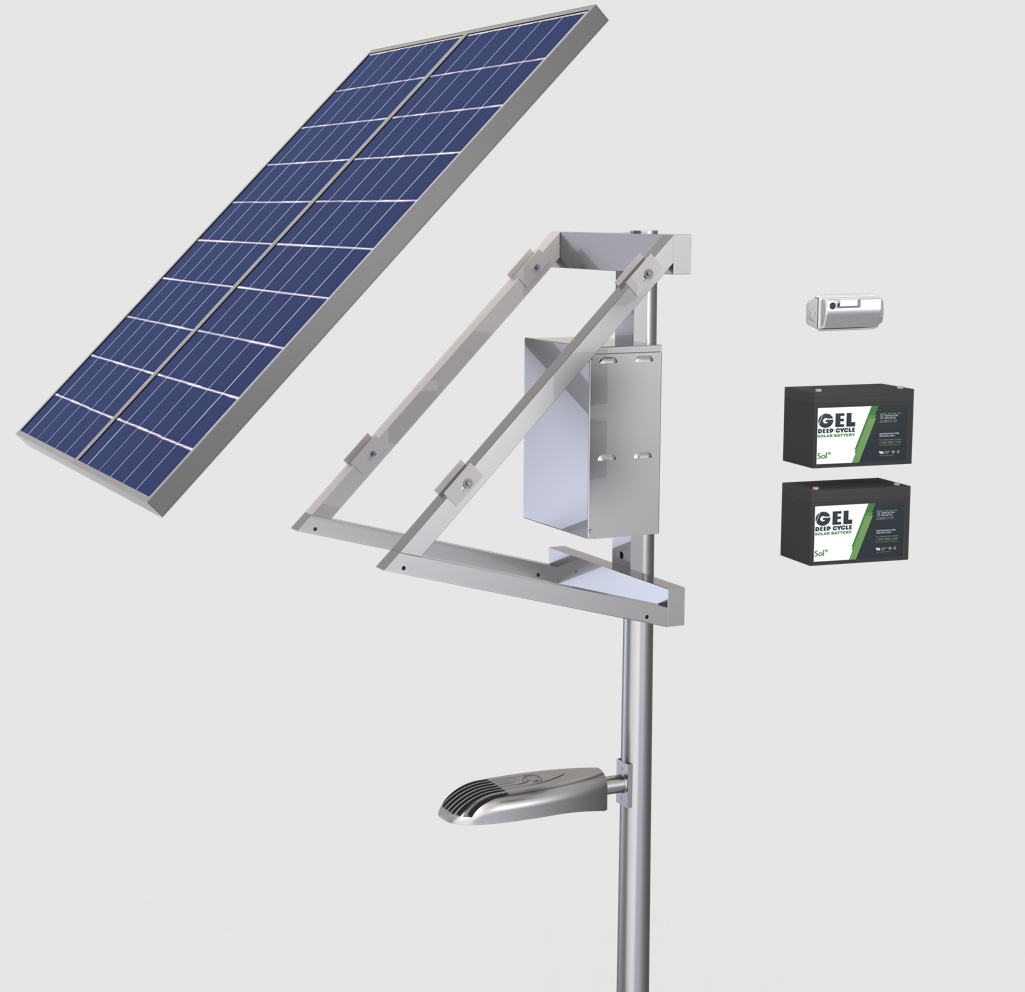Educational 22 April 2023
In the lighting industry, light-emitting diodes (LED) are quickly becoming the predominant type of lighting for industrial and commercial applications, both indoors and outdoors.
In contrast with other popular types of light bulbs commercial buildings use, such as incandescent and fluorescent lights, LED light bulbs are more energy efficient. They are also more compact and easier to maintain, thereby reducing the amount of money businesses and municipalities need to spend on light maintenance.
Plus, LEDs can improve the quality of the light emitted thanks to their color rendering index (CRI). LED light can come in different shades, including warm white light, which has a softer appearance, and cool light, which is more vibrant and illuminating.
At Sol by Sunna Design, we specialize in solar lighting for commercial projects. We also offer commercial solar lighting systems for multiple applications, including LED retrofits.
This article will talk more about what an LED retrofit is and why you may consider it for your commercial, municipal, or industrial project.

There are several reasons to consider retrofitting your lighting fixtures to LEDs. For one thing, you can save money, since LEDs are more energy efficient than other types of lighting. In addition, retrofitting can help reduce your carbon footprint.
That’s because LED lights use roughly 75 to 80 percent less energy than incandescent bulbs, the standard type of light bulb used in many commercial buildings and outdoor lights. That means significantly fewer fossil fuels are being burned to produce electricity through LED lights. The impact is even more significant when those LED lights are connected to a solar lighting system.
Out of all the different light bulb options available, LED bulbs emit the least amount of carbon dioxide. In contrast to incandescent bulges, which create 4,500 pounds of carbon dioxide annually, LED bulbs create just 451 pounds. According to the Environmental Protection Agency (EPA), if every residential home in the U.S. replaced just two incandescent light bulbs with LED bulbs, greenhouse gas emissions globally would lower by 17 billion pounds and add energy savings of around $1.5 billion.
There are several benefits to reducing carbon emissions beyond being able to promote your business as eco-friendly. First, reducing carbon emissions can help slow down climate change. Even small retrofit projects can add up to a significant reduction in carbon emissions.
Next, reducing carbon emissions improves air quality for everyone. This can help keep your community safer and healthier. The resulting health benefits can have significant positive effects, such as fewer sick days, increased productivity, and a happier, healthier workforce and community overall.
Finally, there are cost savings related to improving the community’s health. There are also cost savings for your business or municipality, as LED systems require less maintenance and must be replaced less frequently than incandescent and other lighting systems.
